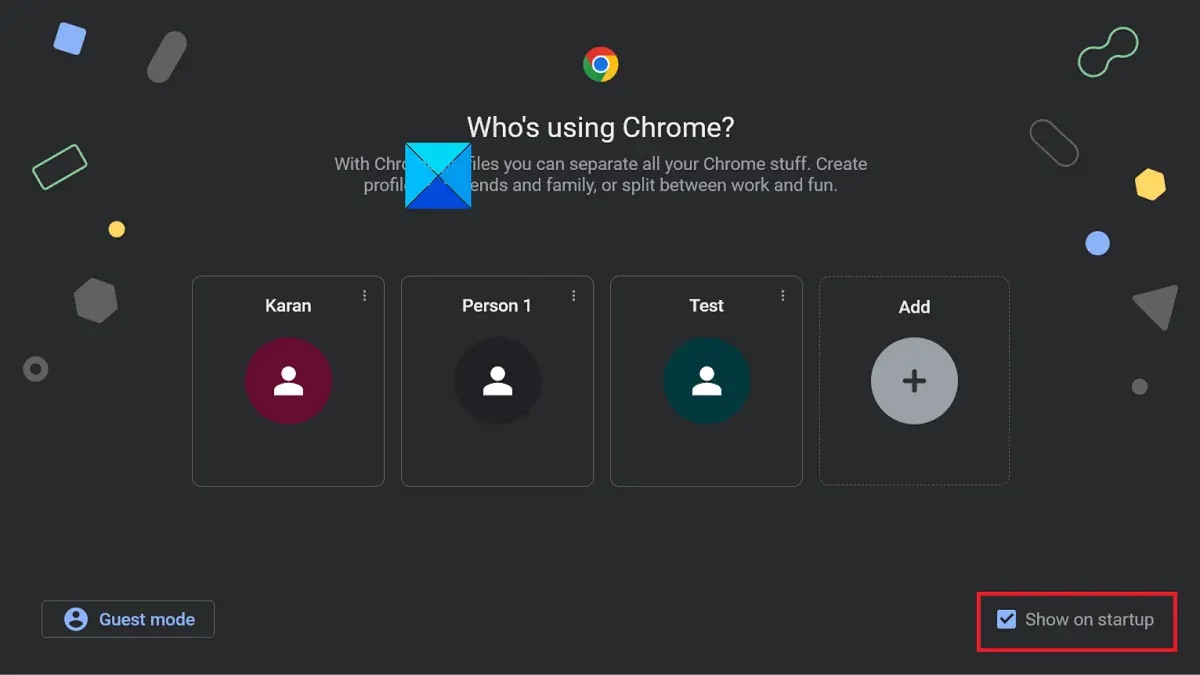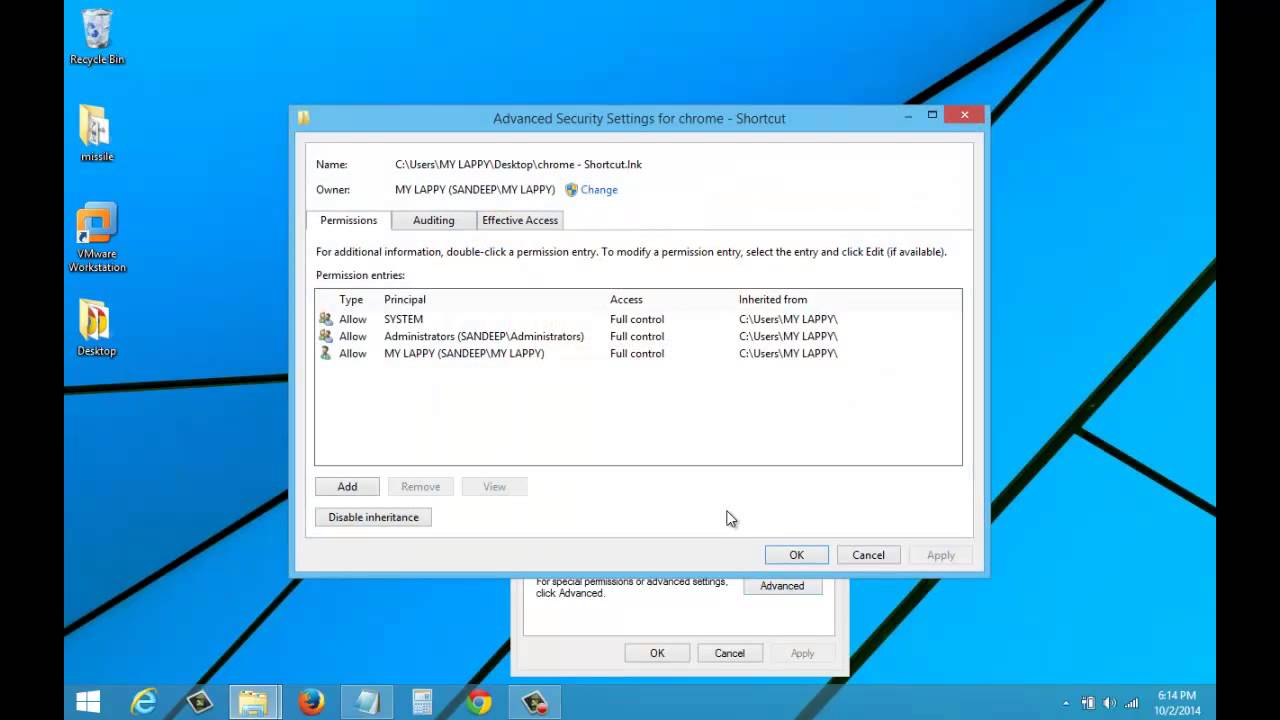Introduction
Google Chrome is a versatile and feature-rich web browser that offers a personalized browsing experience through its user profile functionality. Chrome profiles allow users to create separate identities within the browser, each with its own set of bookmarks, history, extensions, and settings. This feature is particularly useful for individuals who share a computer or for those who wish to maintain distinct browsing environments for work and personal use.
However, there are instances when users may need to disable or remove a Chrome profile. This could be due to a variety of reasons, such as streamlining the browsing experience, decluttering the browser interface, or simply wanting to remove an unused or unnecessary profile. Fortunately, Chrome provides a straightforward method for managing and disabling profiles, allowing users to efficiently organize their browsing environments.
In this guide, we will walk through the step-by-step process of disabling Chrome profiles. Whether you're a seasoned Chrome user or a newcomer to the browser, this tutorial will equip you with the knowledge to manage your profiles effectively and tailor your browsing experience to your specific needs. Let's dive into the simple yet essential steps to disable Chrome profiles and streamline your browsing environment.
Step 1: Open Chrome Settings
To begin the process of disabling a Chrome profile, the first step is to access the browser's settings. Chrome provides a user-friendly interface for managing various aspects of the browser, including profiles, privacy settings, and advanced configurations. Here's how to open Chrome settings:
-
Launch Google Chrome: Start by opening the Chrome browser on your computer. You can do this by clicking on the Chrome icon in your desktop or taskbar, or by searching for "Chrome" in your computer's applications or programs list.
-
Access the Menu: Once Chrome is open, look for the three vertical dots located in the top-right corner of the browser window. This icon represents the Chrome menu. Click on it to reveal a dropdown menu with various options.
-
Open Settings: Within the dropdown menu, locate and click on the "Settings" option. This will redirect you to the Chrome settings page, where you can customize and manage different aspects of the browser.
-
Alternative Method: Another way to access Chrome settings is by typing "chrome://settings/" in the address bar and pressing Enter. This direct URL will take you to the settings page without the need to navigate through the menu.
By following these steps, you will successfully open the Chrome settings, laying the groundwork for the subsequent actions required to manage and disable Chrome profiles. With the settings page now accessible, you are ready to proceed to the next step in the process.
Opening Chrome settings is the initial and crucial step in the process of disabling a Chrome profile. This straightforward procedure sets the stage for efficiently managing your browser's profiles and customizing your browsing experience to suit your preferences and organizational needs.
Step 2: Click on "People"
Upon accessing the Chrome settings, the next pivotal step in disabling a Chrome profile involves navigating to the "People" section. This section is where users can manage and customize the various profiles associated with the browser. Here's a detailed walkthrough of how to proceed:
-
Locate the "People" Section: Once you are on the Chrome settings page, look for the "People" section in the left-hand sidebar. This section is specifically designed for managing Chrome profiles, allowing users to add, edit, and remove profiles as needed.
-
Click on "People": Direct your attention to the "People" section and click on it to reveal the list of profiles currently set up in your Chrome browser. Each profile is represented by a distinct icon and name, making it easy to identify and manage individual profiles.
-
Explore Profile Options: Upon clicking on "People," you will be presented with a range of profile management options. These may include adding a new profile, editing existing profiles, and, most importantly for this guide, disabling or removing profiles that are no longer needed.
-
Select the Target Profile: Identify the specific profile that you intend to disable. Chrome allows users to create and switch between multiple profiles, each tailored to different preferences and browsing needs. By selecting the target profile, you can proceed to the next steps to disable it.
By clicking on "People" within the Chrome settings, you gain access to the central hub for managing profiles, enabling you to navigate through the various profile management options and take the necessary steps to disable or remove unwanted profiles. This straightforward process empowers users to streamline their browsing experience and maintain a tidy and efficient Chrome interface.
Navigating to the "People" section is a fundamental aspect of managing Chrome profiles, providing users with the tools and options needed to customize their browsing environment to align with their preferences and organizational requirements. With this step completed, you are now ready to delve into the subsequent actions required to effectively disable a Chrome profile.
Step 3: Select "Manage other people"
After clicking on the "People" section within the Chrome settings, the next crucial step in the process of disabling a Chrome profile involves selecting the option "Manage other people." This feature provides users with a comprehensive overview of all existing profiles and offers the necessary controls to disable or remove unwanted profiles. Here's a detailed exploration of this pivotal step:
-
Locate "Manage other people": Upon accessing the "People" section, navigate to the "Manage other people" option. This selection is typically positioned prominently within the profile management interface, allowing users to efficiently oversee and modify the profiles associated with their Chrome browser.
-
Access Profile Management: By choosing "Manage other people," users are presented with a centralized dashboard that displays all active profiles within the browser. Each profile is listed with its respective name and icon, providing a clear overview of the existing profiles and enabling users to identify the specific profile they intend to disable.
-
Review Profile Details: Within the "Manage other people" interface, users can review the details of each profile, including the associated name, icon, and any personalized settings or preferences. This comprehensive view empowers users to make informed decisions regarding the disabling or removal of specific profiles based on their individual browsing needs.
-
Disable the Target Profile: Once the desired profile to be disabled is identified, users can proceed to take the necessary action to disable it. Chrome offers a straightforward option to disable a profile, ensuring that the browsing environment can be efficiently streamlined without unnecessary or redundant profiles cluttering the interface.
-
Confirm the Disabling Process: Upon initiating the disabling of a profile, Chrome may prompt users to confirm their action to ensure that the intended profile is being disabled. This additional step serves as a safeguard, preventing accidental profile removal and providing users with the opportunity to review their choices before finalizing the process.
By selecting "Manage other people" within the Chrome settings, users gain access to a comprehensive profile management interface that facilitates the efficient disabling or removal of unwanted profiles. This pivotal step empowers users to streamline their browsing environment, ensuring that their Chrome browser is tailored to their specific preferences and organizational requirements.
Navigating to the "Manage other people" section represents a crucial aspect of managing Chrome profiles, providing users with the necessary tools and controls to customize their browsing experience effectively. With this step completed, users are well-equipped to proceed to the final actions required to disable a Chrome profile, thereby optimizing their browsing environment and enhancing their overall user experience.
Step 4: Disable the profile
After accessing the "Manage other people" section and identifying the target profile for disabling, the subsequent step involves executing the actual process of disabling the selected profile. Chrome provides a straightforward method for users to disable profiles, allowing for a streamlined and organized browsing experience. Here's a detailed exploration of the essential steps to disable a Chrome profile:
-
Initiate the Disabling Process: Once the target profile to be disabled is identified within the "Manage other people" interface, users can proceed to initiate the disabling process. This typically involves clicking on the specific profile or accessing the associated settings that enable users to disable the profile.
-
Confirm the Disabling Action: Upon selecting the option to disable the profile, Chrome may prompt users to confirm their action. This additional step serves as a safeguard, ensuring that users have the opportunity to review their decision before finalizing the disabling process.
-
Verify the Profile Removal: After confirming the disabling action, Chrome will proceed to disable the selected profile. Users can verify the successful removal of the profile by checking the "People" section within the Chrome settings, where the disabled profile should no longer be listed.
-
Impact on Browsing Environment: Disabling a profile in Chrome ensures that the associated browsing data, including bookmarks, history, and settings, is no longer accessible within the browser interface. This streamlines the browsing environment, decluttering the interface and providing users with a more focused and organized browsing experience.
-
Flexibility and Customization: It's important to note that disabling a profile in Chrome does not permanently delete the profile or its associated data. Users have the flexibility to re-enable the profile at any time, allowing for seamless customization of their browsing environment based on evolving preferences and needs.
By following these essential steps, users can effectively disable unwanted profiles within Chrome, optimizing their browsing environment and ensuring a tailored and efficient user experience. This streamlined approach empowers users to maintain a tidy and organized browsing interface, reflecting their individual preferences and organizational requirements.
Disabling a profile in Chrome represents a pivotal aspect of profile management, providing users with the necessary controls to streamline their browsing environment and maintain a personalized and efficient user experience. With the profile successfully disabled, users can enjoy a decluttered and focused browsing interface, enhancing their overall satisfaction with the Chrome browser.
Conclusion
In conclusion, the ability to manage and disable Chrome profiles is a valuable feature that empowers users to tailor their browsing experience to their specific needs and preferences. By following the simple yet essential steps outlined in this guide, users can efficiently navigate the Chrome settings, access the "People" section, and proceed to disable unwanted profiles, streamlining their browsing environment and enhancing their overall user experience.
Disabling Chrome profiles offers a range of benefits, including decluttering the browser interface, optimizing system resources, and maintaining a focused and organized browsing environment. Whether users are streamlining their personal browsing habits, managing shared computers, or simply decluttering their Chrome interface, the process of disabling profiles provides a practical solution for customizing the browser to align with individual preferences.
Furthermore, the flexibility inherent in disabling Chrome profiles ensures that users can adapt their browsing environment as needed, enabling seamless customization and organization. The streamlined approach to profile management allows users to maintain a tidy and efficient browsing interface, reflecting their evolving preferences and browsing habits.
It's important to note that while disabling a profile removes its associated data from the browser interface, the profile and its data remain intact and can be re-enabled at any time. This flexibility underscores the user-centric approach of Chrome profile management, providing individuals with the freedom to customize their browsing environment without the fear of permanent data loss.
By embracing the process of disabling Chrome profiles, users can take full control of their browsing experience, ensuring that their Chrome browser is tailored to their unique preferences and organizational requirements. This proactive approach to profile management reflects Chrome's commitment to user empowerment and customization, ultimately enhancing the overall satisfaction and usability of the browser.
In essence, the ability to disable Chrome profiles represents a fundamental aspect of efficient profile management, enabling users to maintain a personalized and organized browsing environment that aligns with their individual needs and browsing habits. With the knowledge and insights gained from this guide, users are well-equipped to optimize their Chrome browser and enjoy a streamlined and tailored browsing experience.

























